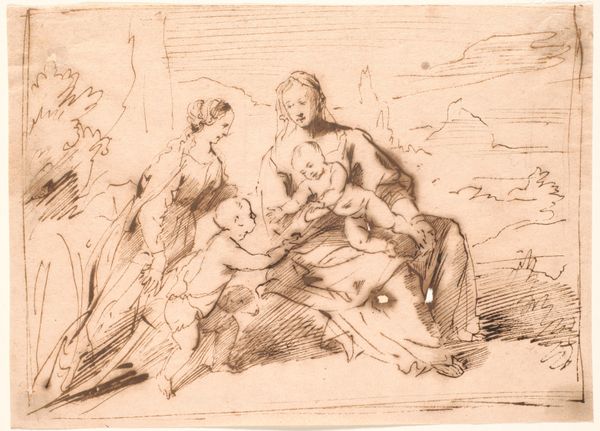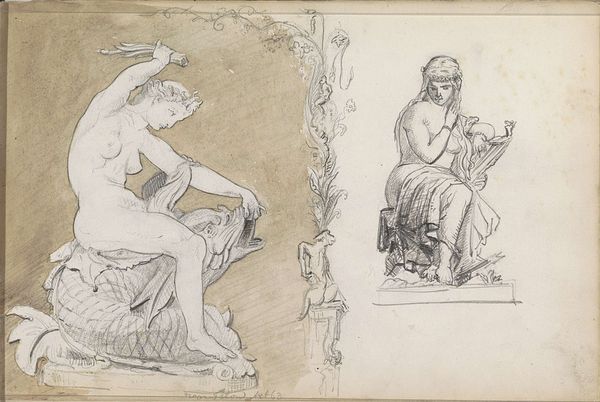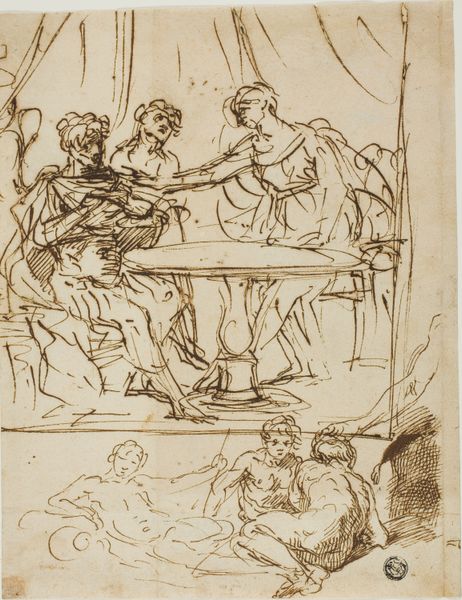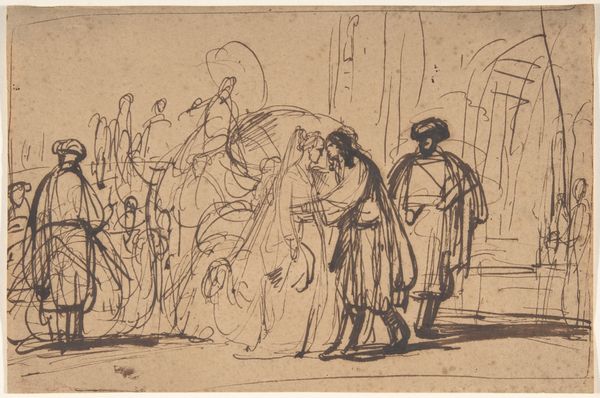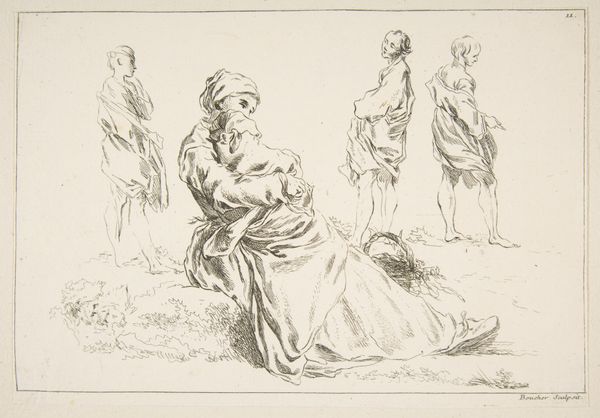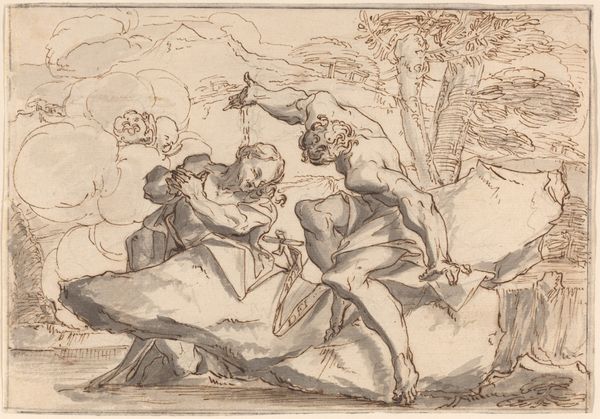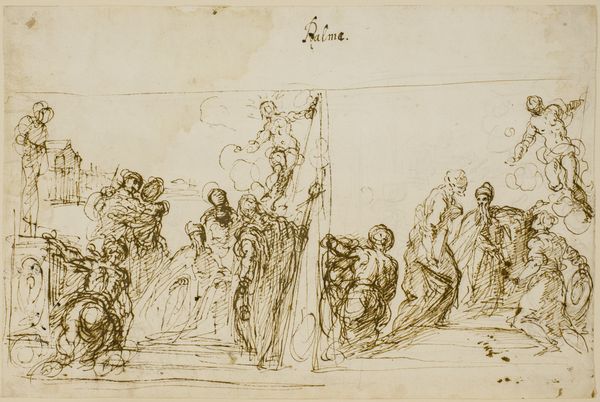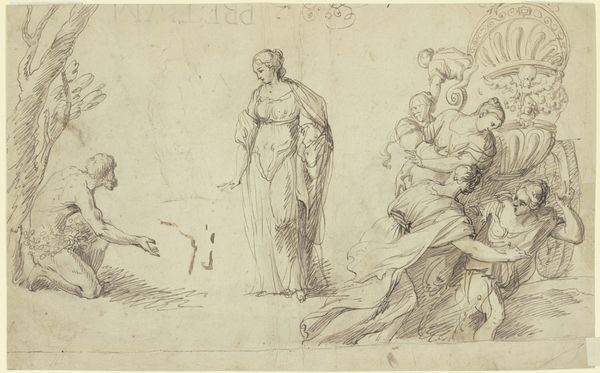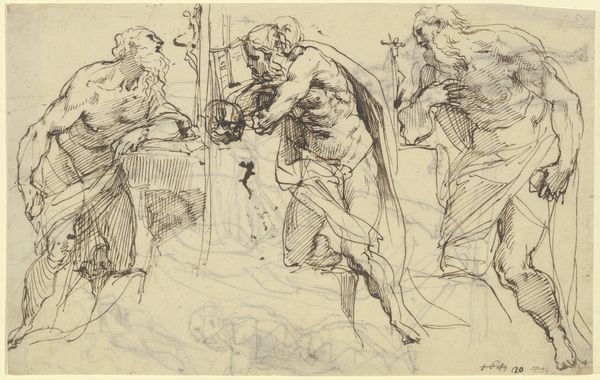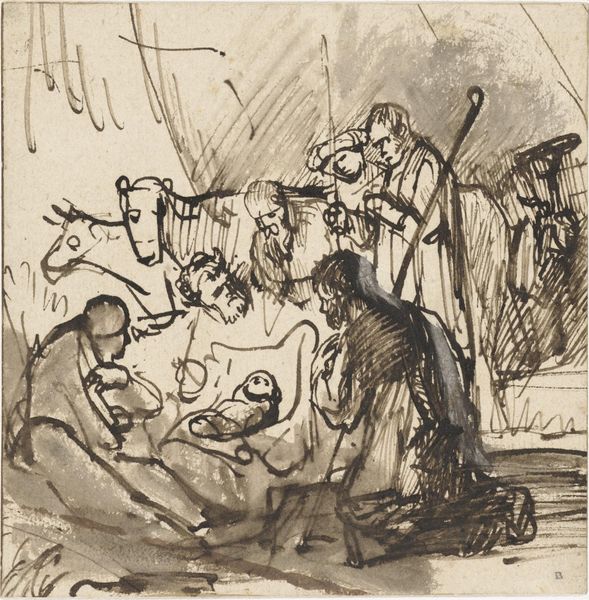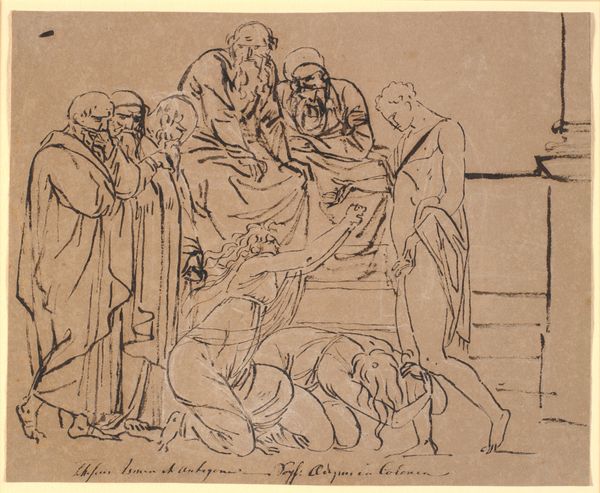
Alexanders sendebud hos den persiske filosof 1743 - 1809
0:00
0:00
drawing
#
drawing
#
imaginative character sketch
#
light pencil work
#
ink drawing
#
pen sketch
#
personal sketchbook
#
ink drawing experimentation
#
pen-ink sketch
#
sketchbook drawing
#
sketchbook art
#
fantasy sketch
Dimensions: 202 mm (height) x 307 mm (width) (bladmaal)
Editor: So this is Nicolai Abildgaard’s “Alexander's Messenger at the Persian Philosopher,” created sometime between 1743 and 1809. It's an ink drawing and…it almost looks like a study or a sketch. The lines are so fluid, the forms unfinished. What jumps out at you when you see it? Curator: Immediately, I’m drawn to the physicality of the figures, but more importantly, the evidence of the artist’s hand – the actual process of *making*. Look at the varying pressures applied to the pen, the washes of ink that build volume and drama. This isn’t about some illusionistic ideal; it’s about Abildgaard wrestling with the material, experimenting, almost *thinking* through the ink. Editor: That’s a cool perspective! I was focusing on the historical scene – the interaction between Alexander’s messenger and the philosopher – but you’re zeroing in on the artist's physical engagement with the medium itself. Curator: Precisely! Consider the availability, and cost, of ink and paper at this time. These weren't neutral materials. They were products of labor, commerce, systems of power. Abildgaard's act of sketching becomes a material performance, a visible record of his intellectual and artistic labor. We see not just the subject, but the *means* by which that subject takes form. Where do you see the evidence of the artist grappling with his materials? Editor: I see it in the quick, repetitive strokes around the figures' drapery – it's almost like he’s searching for the right form. And the shading! It's uneven and raw, definitely not trying to hide the process. Curator: Exactly! And how might we read this emphasis on the material against the grain of traditional history painting? It certainly prompts us to question what's deemed ‘finished’ versus ‘preparatory,’ challenging these established artistic hierarchies. Editor: This has totally shifted how I see it. I was caught up in the subject, but now I appreciate it more as a material investigation. Curator: Art history too often overlooks the practical reality, the messy, tangible processes behind artworks. Paying attention to these elements opens up fresh insights into an artist’s work and time.
Comments
No comments
Be the first to comment and join the conversation on the ultimate creative platform.
